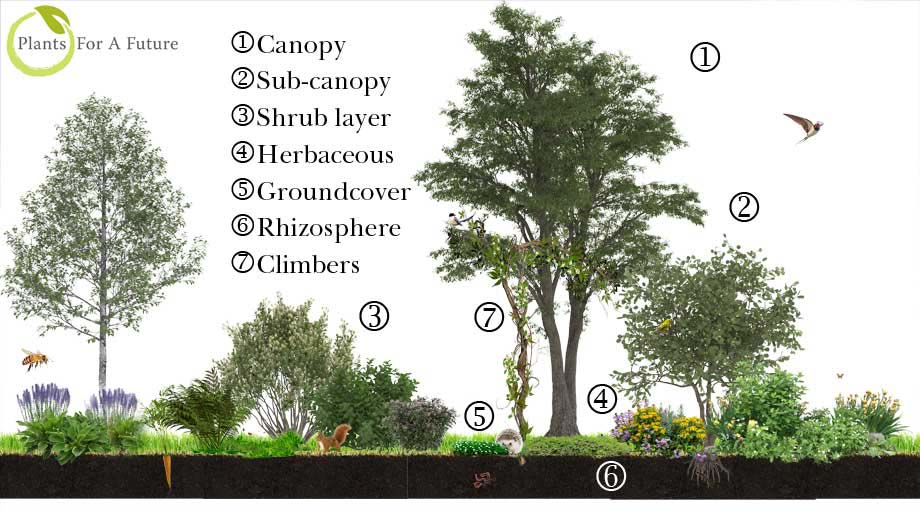What is a Food Forest?
A natural forest is one of the most successful ecosystems on the face of this planet. These ecosystems are more than just collections of trees. Forests teem with life. They are full of beneficial interactions, resilient and self-sustaining. They can support a wide range of wildlife and have myriad benefits for the planet as a whole. They are valuable carbon sinks and water stores and can help maintain the world's most important natural cycles. We can learn from this type of ecosystem to create our own food-producing systems.
A food forest is, simply put, a growing system that mimics a natural forest in a range of different ways. We take many of the things that make forests so great and replicate them in gardens or on farms. Food forests are another form of a complex ecosystem. They can be very large or tiny, incorporating only a small number of trees and other plants. But in order to take the idea of a forest and make it meet our human needs, we replace the plants in a natural forest system with plants that benefit us.
Plants
The plants in a food forest all benefit us, either directly or by helping the ecosystem to thrive in some way. They might:
- Provide food – such as fruits, nuts, seeds or greens.
- Provide other yields – such as fuel, crafting or construction materials, medicines, etc..
- Dynamically accumulate nutrients to feed the system. (Though fixing nitrogen from the air, or gathering nutrients with their deep roots from far below ground level.)
- Repel or distract pest species (to help food-producing and other plants to thrive).
- Attract a range of beneficial wildlife. (For example, pollinators, predatory insects and other wildlife that preys on pest species and helps keep a natural balance in the system.)
The plants in a food forest are densely planted. Like the plants in a natural forest, they form a series of layers. Usually, a food forest will have:
- An upper tree canopy (formed with larger trees).
- A lower tree layer (with smaller, often fruiting trees).
- A shrub layer
- A herbaceous layer
- Ground cover plants
- Root crops
Vining plants may also grow up through these layers.

You can find great examples of Food Forest plants here
How to search for Food Forest Plants
Companion Planting, Polycultures and Guilds
20 Plant Polycultures and Guilds
The plants in the system are not just chosen for their benefit to us. Each plant is carefully chosen to suit its position and to work harmoniously with its neighbours. The plants will, of course, be different depending on where in the world a food forest is to grow. A food forest in the tropics will look very different from one in temperate climes.
Wildlife
It is important to understand, however, that a food forest is made up of more than just plants. A wide range of other life, both above and below the soil, also help to make up one of these beautiful and productive food-producing systems. A well-designed food forest will help to improve the biodiversity of the area – drawing in, feeding and sheltering a huge range of different creatures.
Soil
A food forest also incorporates the fragile and amazing soil web below the visible elements of the food-producing zone. No plants would grow without the soil and the interconnected agency of the life that lives in it. Bacteria, fungi and other soil biota are all also elements of a forest garden. Though we cannot usually see them, they are crucial elements that allow the food forest to grow.
By working with nature, we can create thriving collections of plants, animals and fungi that, once established, can be surprisingly low-maintenance and self-sustaining. Whether on a small scale in a garden or on a larger scale on farmland, this is one of the best solutions for growing our food in a sustainable and ethical way.